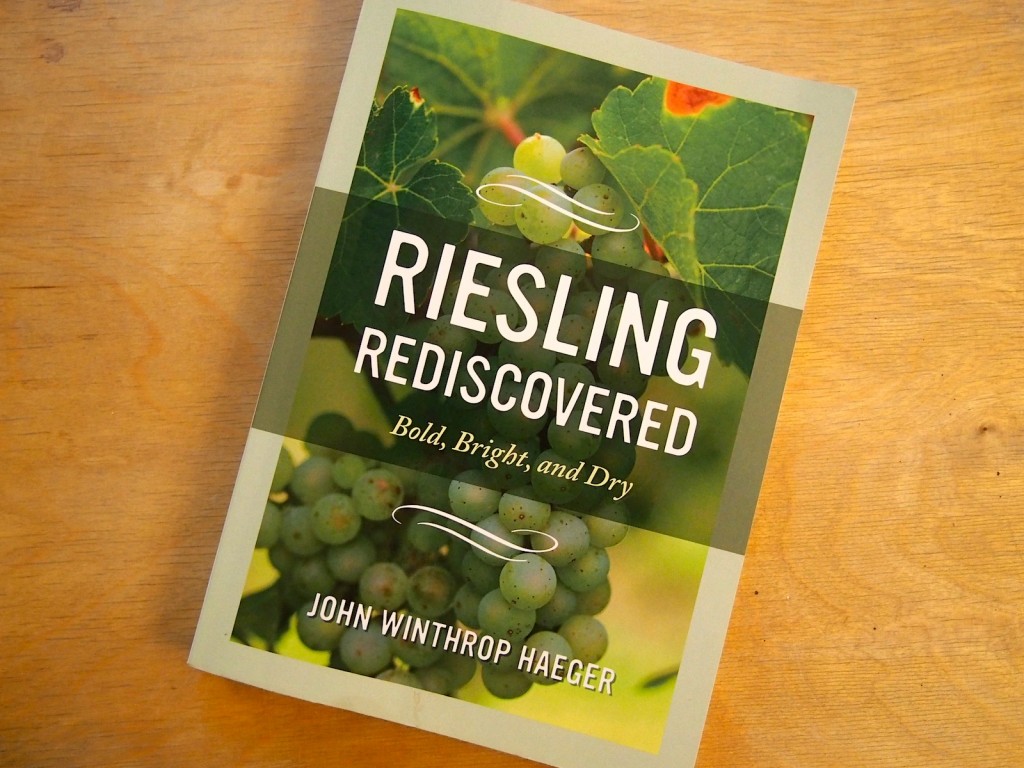2015 was not an easy Riesling year, and I’m not talking about the vintage (probably great in Europe, possibly less exciting in many parts of North America). During the last year I’ve been told any number of times but people who are convinced that they know for sure that Riesling has quite simply run out of steam, that in spite of the considerable growth in Riesling sales since 2000 the grape never topped a 1% market share and therefore doesn’t deserve to be taken seriously, was turned into a fashion by the Summer of Riesling promotions and is now oh so very 2013, also that the Summer of Riesling made a catastrophic mistake in not focusing totally on dry Riesling and the grape as a whole now paying the price for this. There is a grain of truth in all of this, but the whole truth is so much more complex and more positive than these gibes suggest.
2016 will be a very different Riesling year, not least because John Winthrop Haeger’s book Riesling Rediscovered (University of California Press) appears and is a great answer to all of this negativity. It both takes Riesling extremely seriously and enthusiastically celebrates the great dry wines made from the grape around the Northern Hemisphere of Planet Wine (for reasons of time and space the Southern Hemisphere was excluded). It also examines the prejudices that still clings to Riesling – most importantly that Riesling is a sweet wine in an ugly negative sense – and exposes their surprising deep and historical roots. Nobody has told that story anywhere near as well as Haeger, and along the way he provides a lot of fascinating insights into the development of the wine industry and wine market between the Middle Ages and the present day. Even if you are not particularly interested in Riesling this is a great read. If you are Riesling obsessed, then you will need to read the chapter on clones, because it is the only place this information is available in this thorough and complete form.
However, all this only prepares the ground Haeger’s in-depth survey of the contemporary world of dry Riesling. That spans roughly 200 pages, and to read this mass of detailed description of the best dry Riesling in Europe and North America you certainly need to feel some fascination for the enormous diversity of wines made from this chameleon among white grape varieties. What makes those 200 pages worth working your way through is the wealth of information about the top vineyard sites and the producers who are responsible for the wines that made and make them famous. The complex interaction of natural and human factors that lies behind all great wines is Haeger’s real theme, and the world of dry Riesling is just as fertile a subject for him as the Pinot Noirs of North America were beforehand. Some prior knowledge of winegrowing and winemaking methods will certainly help you to follow all this properly, but if you are halfway intelligent and fascinated by the subject you shouldn’t have much trouble.
Of course, although 200 pages is a lot it isn’t nearly enough to describe the many hundreds of top producers of dry Riesling in the Northern Hemisphere, and Haeger therefore concentrated on a personal selection of the best. It is here that the book can most easily be attacked, particularly due to the omission of detailed description of a few famous high-end producers like Dönnhoff in the Nahe, Germany. In a few regions that are experiencing rapid change like the Finger Lakes of Upstate New York Haeger’s last visit was clearly a year or two prior to completion of the manuscript, and he therefore seems to have missed some new developments with long-term implications (see my Riesling Revelations 2015 below). However, these small weaknesses don’t significantly detract from the enormous value of the book as the single serious guide to this subject. My own Best White Wine on Earth (Stewart, Tabori & Chang, 2014) took a very different approach by looking casting a wide net that took in the entire range of Riesling wines from both hemispheres, and rarely went into this kind of detail. If you want that then Haeger’s new work is the sole reliable and thoughtful source. It is highly recommended to anyone interested in Riesling, and to all somms who are genuinely interested to have an overview of the entire world of wine, and to all those who have been throwing those anti-Riesling gibes around recently. To pre-order it click on the following link or contact your local bookstore. The price is just over $30:


![120114_riesling_global_RZ [1600x1200]](http://www.stuartpigott.de/wp-content/uploads/2015/12/120114_riesling_global_RZ-1600x12002.jpg)